When large groups of Italians migrated to the US in the late 19th and early 20th centuries, Mafia members and organized crime professionals traveled with them. Many made men entered the bootlegging business during the Prohibition era, then moved to other forms of illegal enterprises, like gambling, racketeering, drug smuggling, and prostitution rings, once the US repealed Prohibition in 1933. Throughout the 20th century, these often-rivaling mobs continued their underground operations as they fought for dominance in their respective communities.
While these crime families, known collectively as Cosa Nostra (“Our Thing”), spent most of their time hustling in their illicit enterprises or whacking family rivals and finks, they also appreciated a good meal. Many dons and bosses enjoyed mixing business with pleasure, and regularly held sit-down meetings at their favorite Italian joints around town. Often, these restaurants, lounges, and bars were mob-owned. But now and then, the Goodfellas just found a spot they enjoyed visiting and became frequent patrons.
From cozy, country-themed diners to exclusive and upscale New York eateries, this collection features some of the most notorious mobsters’ favorite dining haunts, along with details of some of the dirtiest business practices that took place there.
1. The Green Mill Lounge Was One Of Al Capone’s Favorite Chicago Haunts, Thanks To Its Underground Tunnels
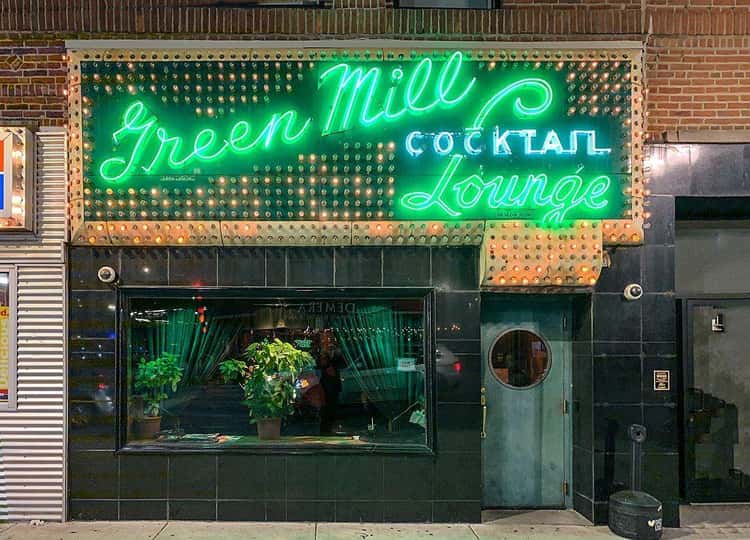
Chicago’s jazz bar The Green Mill might be the oldest and longest-running jazz nightclub in the nation. While other bars and liquor-serving venues closed during the Prohibition era, Al Capone and his associate, Jack “Machine Gun” McGurn, kept The Green Mill running.
Although it initially opened under a different name in 1907, Tom Chamales bought and rebranded it by placing a green windmill on the bar’s roof and changing its name to the Green Mill Lounge in 1910. He eventually leased it to the mob when Prohibition laws passed, establishing McGurn as part-owner. Notorious gangster Al Capone became a regular customer with his crime family now running the speakeasy.
Soon after the merger, McGurn installed a trapdoor in the floor of the venue’s stage that connected to a series of underground tunnels. While current bartenders insist the tunnels were only used to haul coal and liquor, legend holds that Capone and his syndicate affiliates may have also used the system to escape infiltrating police officers.
The Green Mill is still open seven days a week, and patrons can experience live music and a cash-only bar as they soak in the jazz club’s history. The trapdoor that leads to the underground tunnel system still hides in plain sight on the stage, and Capone’s go-to booth remains at the end of the bar. A sign above the liquor wall also reminds visitors of its seedy past, memorializing a mock execution that Capone and McGurn might have ordered on a performer who moved to a rival club: “Big Al was ingesting spaghetti / Machine Gun McGurn strangely still / Told Joe E. ‘You’ll look like confetti / If you try to quit The Green Mill.’”
2. Sam Giancana Owned Piero’s, Where Frank Sinatra And The Rat Pack Regularly Dined With Mafiosi
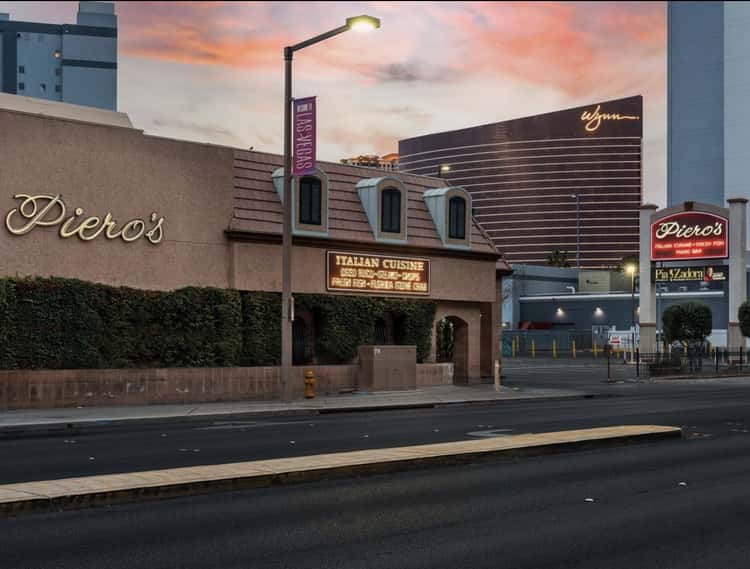
Joseph “Joe the Cook” D. Pignatello grew up making Italian meals in a Chicago home kitchen with Al Capone’s mother, then went on to work as a personal chef for Chicago Outfit head boss Sam “Momo” Giancana. When Pignatello petitioned to open a restaurant in Las Vegas and was denied due to his known ties to the mob, Giancana decided to build and open one for him.
Pignatello owned and operated the restaurant, Villa d’Este, for more than two decades, regularly serving Giancana, his good friend Frank Sinatra, the rest of the Rat Pack, and many other celebrities and mobsters. A patron walking into Villa d’Este in the 1960s wouldn’t have been surprised to see Anthony “Tony the Ant” Spilotro, sidekick “Fat Herbie” Blitzstein, and other members of the Hole-in-the-Wall Gang dining and doing business.
Although Piero’s moved into the location in 1988, the Italian joint kept its reputation for serving A-list patrons and local mobsters. In 1994, filmmakers featured the Vegas hotspot in the classic Mafia-based movie Casino. The menu hasn’t changed much since its opening, and customers can still order Frank Sinatra’s favorite dish (linguine and clams) when they visit.
3. Willie Moretti Held Court At Joe’s Elbow Room In New Jersey Until He Was Gunned Down There
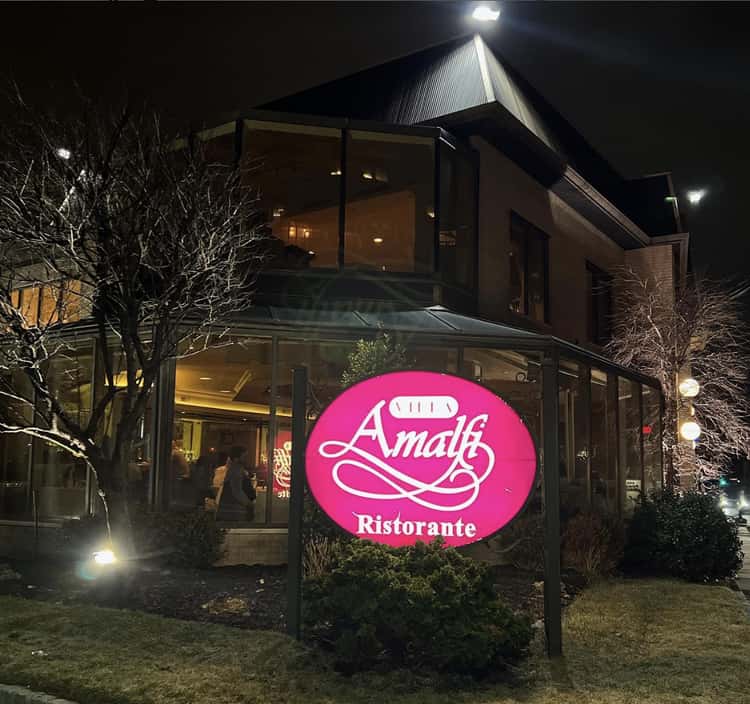
Situated across from Palisades Amusement Park and a short distance from numerous known mobsters’ homes, Joe’s Restaurant – also called Joe’s Elbow Room – was a prime location to hold organized crime meetings. Notorious mob boss Albert Anastasia – then the head of Murder, Inc. – and other members of the Genovese crime family, including Willie Moretti, frequented the restaurant to conduct business and dine.
Although Moretti was only an underboss in the family business, he was still a powerful made man in the public eye. He had a gang of approximately 60 men and held ties to famous singers and comedians like Frank Sinatra, Jerry Lewis, Dean Martin, and Milton Berle. However, when a bad case of syphilis started to affect Moretti’s ability to keep quiet about business, it became clear to Anastasia that the brain-attacking disease was turning the underboss into a fink. After breaking the Mafia code of silence by testifying before the Senate’s Kefauver Committee about his affiliations, Anastasia placed a hit on loud-mouthed Moretti.
On October 4, 1951, Moretti and four other men sat down at Joe’s with the intent of having lunch. But instead of a plate full of pasta, Moretti was served gunshot wounds to the face and head. Although he and his crew were the only patrons in Joe’s when the murder took place, Dean Martin and Jerry Lewis had initially planned to attend the meeting. While Lewis stayed home with a case of the mumps, Martin reportedly forgot about it. The famous Italian-American crooner only learned of the news when he called Moretti to apologize for not showing up as it was broadcast on TV.
Joe’s eventually closed, but another upscale Italian eatery, Villa Amalfi, opened in its place. From Tuesday through Saturday, visitors can dine in the exact location where the Genovese family conducted their sit-downs and Moretti met his untimely end.
4. Bomb Bomb Bar-B-Q Grill In Philadelphia Was Named After A Pair Of Mafia-Related Explosions
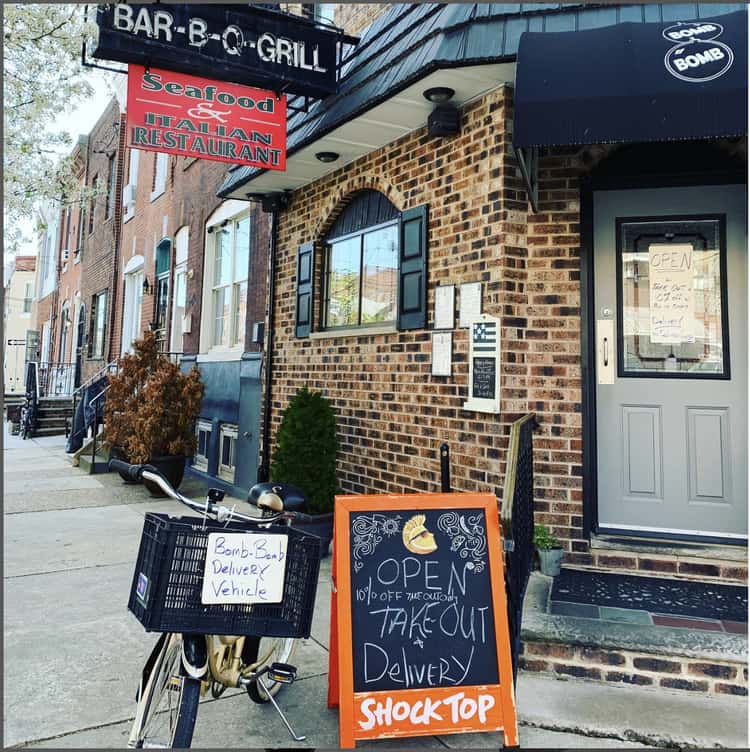
Over the years, 10th and Wolf streets have become infamously rooted in the South Philly mob wars. As an American-Italian-run restaurant situated in the heart of Mafia turf, patrons assume that racketeers manage Bomb Bomb. Although owner Frank Barbato denies ties to the notorious crime families in the area, he named the establishment after a series of mob-related events at the site in the 1930s.
Before Barbato purchased the space in 1951, the corner building was a taproom in the tight-knit Italian community. The first owner, Vincent Margarite, opened the place in 1936 to the disdain of the South Philly Mafia, which owned bars in the neighborhood and considered Margarite’s burgeoning business a threat.
In response, a bomb appeared at the doorstep of the bar a few weeks after it opened. The explosion caused considerable damage, blasting windows out of buildings blocks away. However, the threat didn’t seem to bother Margarite – he reopened for business the following day. To send a louder message, the mobsters set an even larger bomb on the property a few months later. The detonation was forceful and loud enough to shake people from their beds, including the Margarite family who lived in an apartment on the second floor of the building.
After concerned citizens started a petition to close the venue out of safety concerns, Margarite decided to sell it to Jimmy Cataldi, who renamed it Jimmy’s Tavern. He couldn’t shake the building’s explosive history, however. The patrons who visited the tavern simply referred to it as “Bomb Bomb.” When Barbato purchased the building in 1951, he adopted the nickname in honor of its reputation. Now, patrons visiting the establishment can have drinks and dine in one of the area’s most historic buildings.
5. Campisi’s Egyptian Lounge Was A Hub For Gangsters
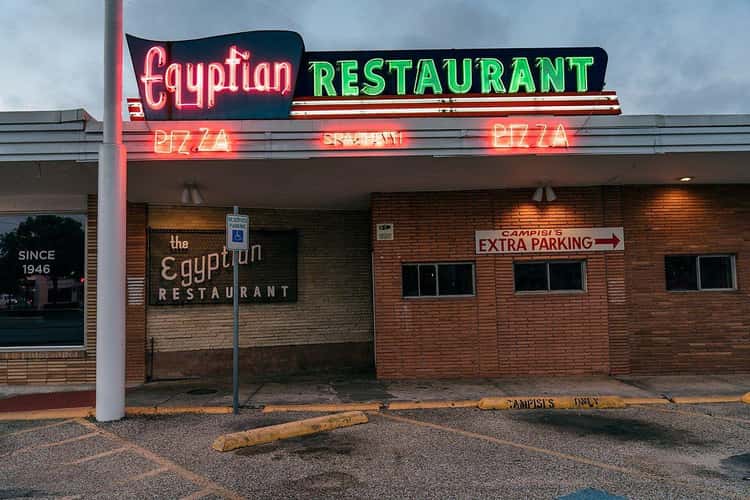
Although the owner denies any formal associations with the Mafia, it’s rumored the Campisi family has held ties with the mob since patriarch and Sicilian immigrant Joe Campisi opened Campisi’s Egyptian Lounge in 1946. So many gangsters hung out at the Dallas pizza joint that the FBI took pictures of every person who entered.
Campisi was good friends with New Orleans Mafia boss Carlos Marcellos, and Jack Ruby dined at the restaurant the night before he murdered Lee Harvey Oswald. Many people believed Campisi was a member of the syndicate and was tied to the Kennedy assassination. While the younger generations of the family admit that patrons regularly gambled and drank in the establishment, they argue that being associated with mobsters doesn’t necessarily mean you are part of the crime family.
After decades of mob-related accusations, Campisi’s restaurant owners decided to capitalize on the lore and market the Mafia mystique. However, it seems that this outward acceptance of bad publicity may be a cover-up in itself. A baseball umpire was shot and paralyzed on the premises of Campisi’s shortly after working a Texas Rangers game in 1991. In 2019, investigators from the US Department of Homeland Security and the criminal division of the IRS accused Campisi’s great-grandson and current restaurant owner, David Campisi, of being a prominent illegal sports bookie.
Despite decades-long allegations and subsequent FBI investigations, the Campisi legacy continues to spread throughout Dallas. Along with the original Mockingbird Lane location, patrons can visit eight other Campisi-owned restaurants.
6. New York’s Sparks Steakhouse Is The Mob Hotspot Where John Gotti Whacked Paul Castellano To Take Over The Gambino Family
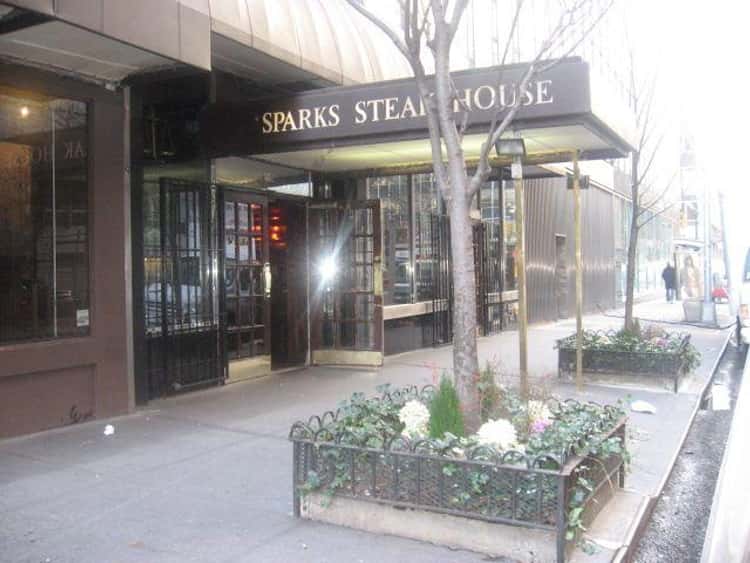
When syndicate leader Paul Castellano increased his share of illicit profits from 10% to 15% and forbade Gambino family members from selling drugs (the most profitable form of mob income from the 1970s through the ’80s), John Gotti decided it was time to whack his boss and take over the family business. On December 16, 1985, Castellano and Gambino family captain Thomas Bilotti pulled up to mob hotspot Sparks Steakhouse for the last time.
Gotti sent four hitmen with semi-automatic handguns hidden in their trench coats to greet the pair of mobsters at the door with a rain of .32 and .380 caliber bullets. The gunmen shot Castellano and Gambino each multiple times as they stepped out of their limousine parked in front of the steakhouse. Gotti and co-conspirator Salvatore Gravano watched from a Lincoln sedan parked across the street, waiting to be signaled by a walkie-talkie that the job was done. After the shooters notified Gotti that the coast was clear, the mobster drove slowly past his victims to inspect the scene for himself. A month after the hit, Gotti ascended to the throne as the Gambino family’s new don.
Fine dining lovers and Mafia history enthusiasts can still visit this famous New York steakhouse for choice cuts of meat and fine wine selection. Although Sparks Steakhouse doesn’t mention the infamous mob hit in its historical timeline, the restaurant notes that it’s a hotspot for celebrities and is often featured on TV and in films.
7. Rao’s In New York Has Been A Mob Hangout For Decades, And A Made Man Was Hit There When He Insulted A Singer
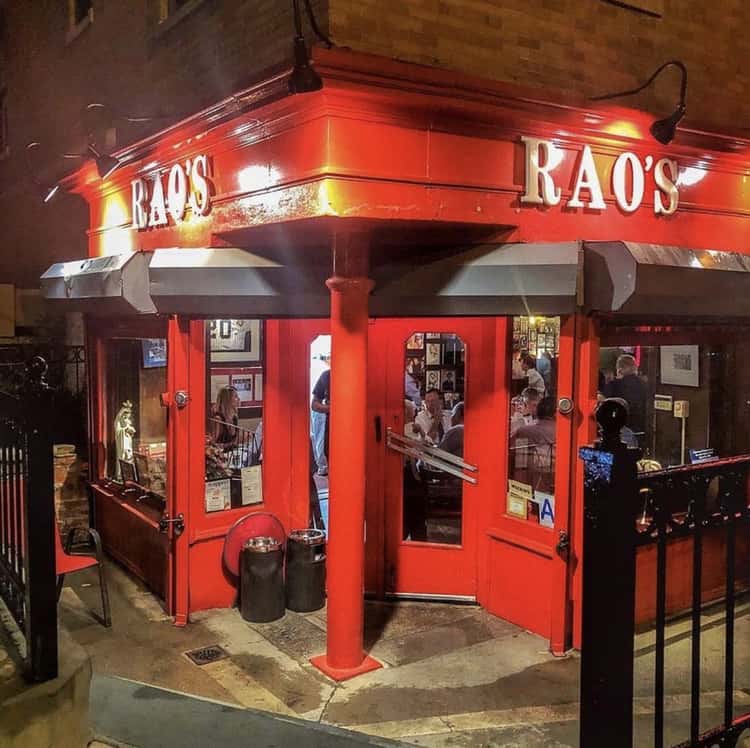
Since the famous New York restaurant’s opening in 1896, Rao’s has hosted numerous infamous guests. Notable mobsters like Lucky Luciano, John Gotti, Paul Castellano, Sammy Gravano, Anthony Indelicato, Dominick Napolitano, and Vincent Basciano frequented the exclusive Italian joint, earning it a reputation for entertaining the most notorious underworld crime families.
Although most of the 10 barstools and 11 set tables on the Rao’s floor are booked by long-time mob customers for the duration of their lives, celebrities, musicians, law enforcement agents, and politicians also make the limited reservation list. As a result, the nightly clientele was (and still is) often a combination of A-list entertainers, plus made men and the government officials intent on putting them away.
Surprisingly, this venue that regularly hosts a blend of Mafiosi, wealthy patrons, and law enforcement agents maintained a relatively peaceful atmosphere until December 22, 2003. On that fateful night, known mobster Louis “Louie Lump Lump” Barone shot and killed another wiseguy, Albert Circelli, for embarrassing a Broadway singer.
As a hot spot for entertainers, musicians breaking out into song was a regular occurrence at Rao’s. That night, Les Miserables star Rena Strober was asked to perform “Don’t Rain On My Parade” for the patrons. As she belted out the tune, an argument broke out at the bar. Circelli wasn’t impressed with Strober’s vocal range and began mocking the singer. When Barone issued a warning by placing his index finger to his lips in a “hushing” symbol, Circelli retaliated by threatening him. Deeply angered by the situation, Barone pulled out his .38-caliber revolver and killed Circelli.
Like a scene viewers would expect to see in an episode of The Sopranos, Barone dropped his weapon and casually walked outside, where two police officers were standing. Just as the mobster was relaying that someone had been shot inside the restaurant, a former police officer dining in Rao’s who witnessed the event ran outside and exposed Barone.
8. Robert’s Lounge In Queens Was Owned By Jimmy Burke, Who Was Connected To The Lufthansa Heist – All Covered In ‘Goodfellas’
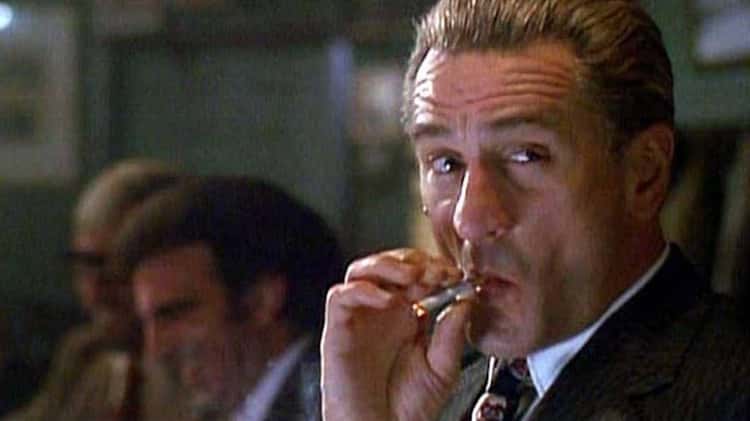
Robert’s Lounge in the Queens borough of New York City, served as the Lucchese crime family’s headquarters from 1957 to 1979. Jimmy “The Gent” Burke owned the bar, which became a hub for selling stolen goods and planning mob-related crimes.
While it was the birthplace for plots like the infamous Lufthansa heist, it was also the death place for snitches and family rivals. Dominick Cersani, who aided the District Attorney of Queens in confiscating one of Burke’s stolen cigarette loads, along with a bartender who angered a member of the mob, were murdered and buried on the premises. The back lawn was so notorious for holding bodies that mobster Henry Hill called the lounge’s bocce courts “Jimmy’s Graveyard.”
The crime featured in the now-classic movie Goodfellas was planned at Robert’s Lounge. At the time, it was the biggest robbery in US history. The heist occurred at New York’s JFK airport, where 11 Lucchese associates stole approximately $5.8 million from a vault. Many Lufthansa cargo crewmembers who gambled at the lounge aided the plot’s success. While mob history enthusiasts can still visit the notorious bar, they won’t find any trace of its past. It is now home to GT Kingston, a Caribbean grill and bar that makes no claims of association with the Mafia.
9. John ‘Junior’ Gotti Loved Cracker Barrel
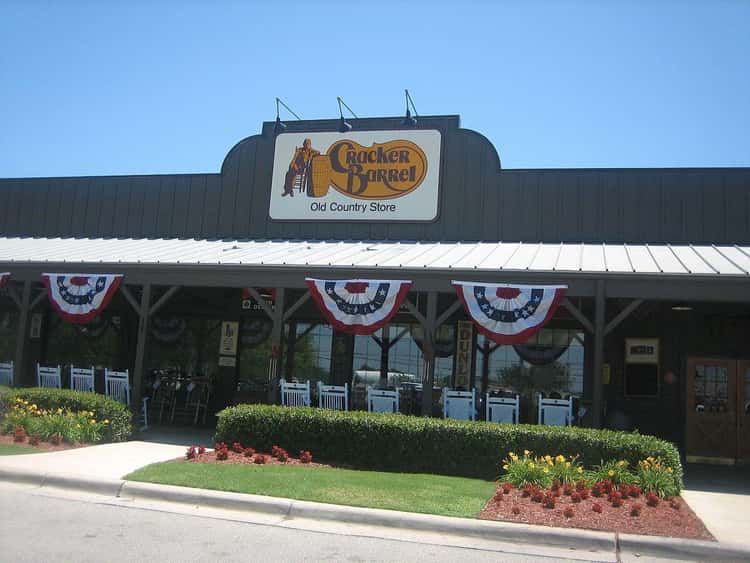
After his father and infamous mob boss, John Gotti, was sentenced to life in prison, John A. Gotti Jr. took over as the Gambino family’s head operator. However, the young crime boss didn’t inherit the intriguing mystique that his father displayed to the world as acting Don. Instead of playing the part of a well-dressed, mysterious gangster who enjoyed the finer things in life, Junior (as he was sometimes known) preferred slouchy tracksuits and country cafe chains.
Junior’s sister Victoria made this shocking discovery when she rode with her boss brother to visit their father in a Marion, IL prison. When the siblings became hungry and decided to stop and eat, Victoria assumed they would be dining in a fancy Italian restaurant or steak house. Instead, Junior took her to Cracker Barrel.
When Victoria wasn’t sure what to order, her brother suggested the chicken and biscuits or country-fried steak. According to close friends, the mobster loved visiting the chain restaurant and was a frequent customer when driving back and forth to visit his incarcerated father.
